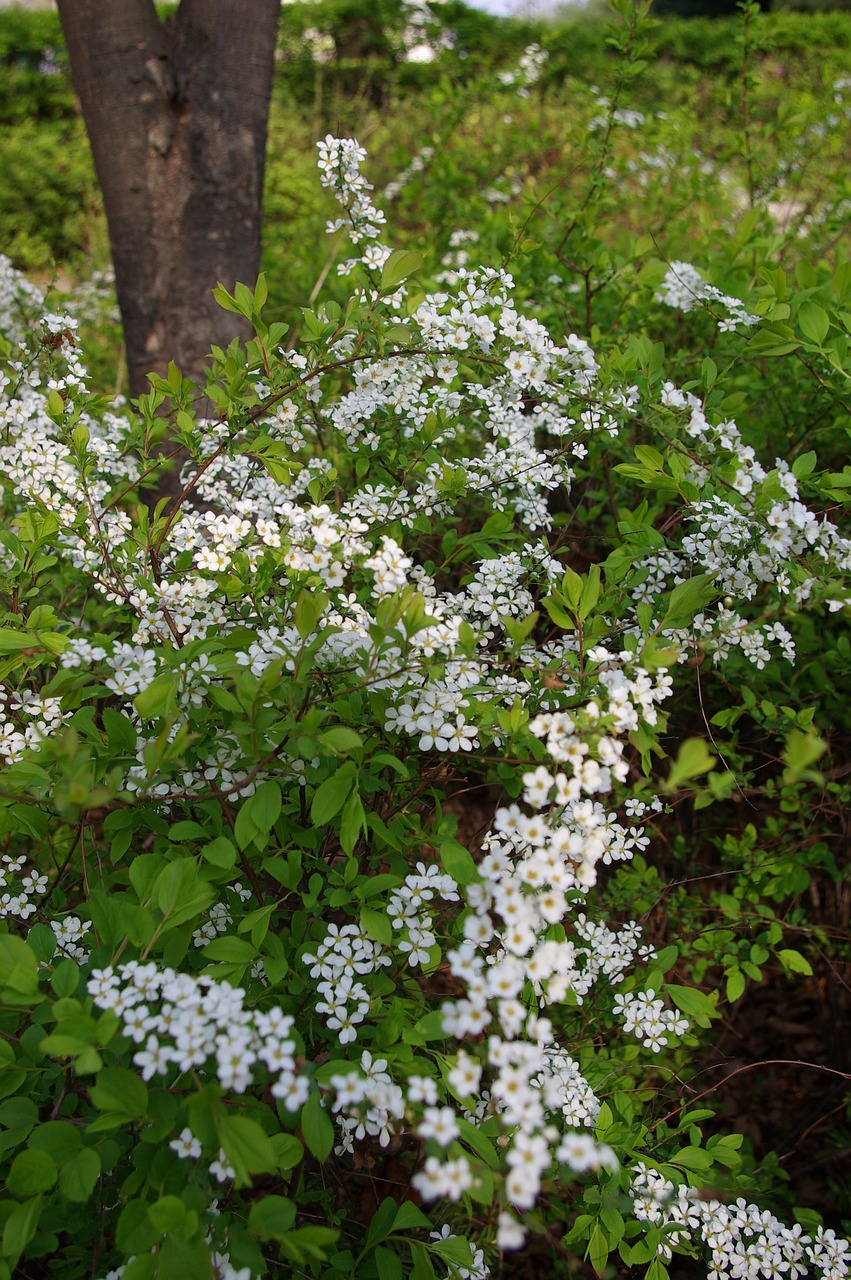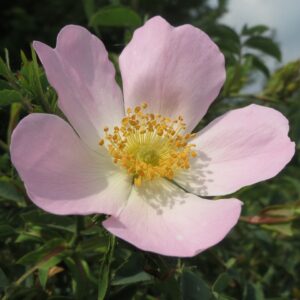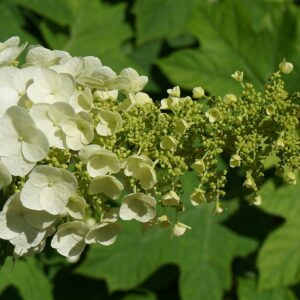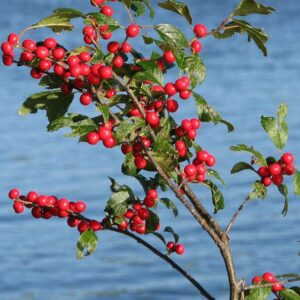White Meadowsweet (Spiraea alba), also known as White Spiraea or Steeplebush, is a deciduous shrub valued for its attractive blooms and adaptability. White Meadowsweet is a versatile and attractive shrub that adds visual interest to a range of garden settings while also supporting local wildlife. Its ability to thrive in moist conditions makes it a valuable choice for wetland and rain garden designs.
Appearance:
Size: White Meadowsweet typically grows 3-6 feet (0.9-1.8 meters) tall and wide. It has a rounded, bushy form with a dense habit.
Leaves: The leaves are elliptical to ovate, about 2-4 inches (5-10 cm) long. They are green and have a slightly serrated edge. In the fall, the foliage can turn yellow or reddish, providing additional seasonal interest.
Flowers: The shrub is renowned for its clusters of small, white flowers that bloom in mid to late summer. The flowers are arranged in dense, upright panicles that can be 2-4 inches (5-10 cm) long. Each flower has five petals and a delicate, sweet fragrance. The blooming period generally lasts from July to August.
Fruit: After flowering, White Meadowsweet produces small, dry capsules containing tiny seeds. While the fruit is not particularly ornamental, it can provide food for birds.
Bark: The bark is usually light brown to grayish and relatively smooth. It may become slightly rougher with age.
Habitat: White Meadowsweet is adaptable and can thrive in a variety of environments, including wet meadows, stream banks, and open woodlands. It prefers moist, well-drained soils but can tolerate a range of soil types. It is hardy in temperate climates and can be found throughout much of North America, particularly in the northeastern and central regions.
Uses:
Ornamental: White Meadowsweet is valued for its showy white flower clusters and its ability to add beauty to gardens and landscapes. It is often used in naturalized plantings, shrub borders, or as part of rain gardens and wetland restorations.
Ecological: The plant provides nectar for pollinators such as bees and butterflies. Its dense growth habit also offers habitat and cover for various wildlife species.
Care:
Pruning: Prune White Meadowsweet in late winter or early spring before new growth begins. Light pruning helps maintain the shape and encourages healthy growth. It can also be pruned after flowering to remove spent blooms and promote a tidy appearance.
Watering: The shrub prefers consistently moist soil but can tolerate periods of dryness once established. Regular watering during dry spells is beneficial.
Fertilizing: A balanced, slow-release fertilizer applied in early spring can help promote vigorous growth and flowering.





